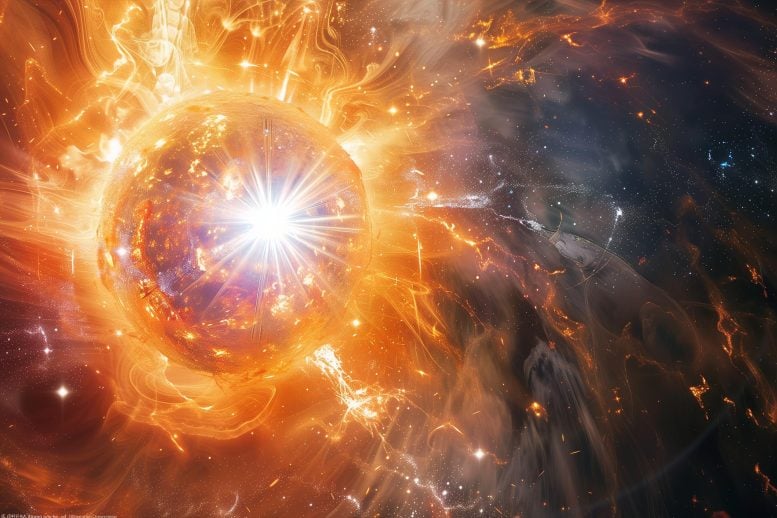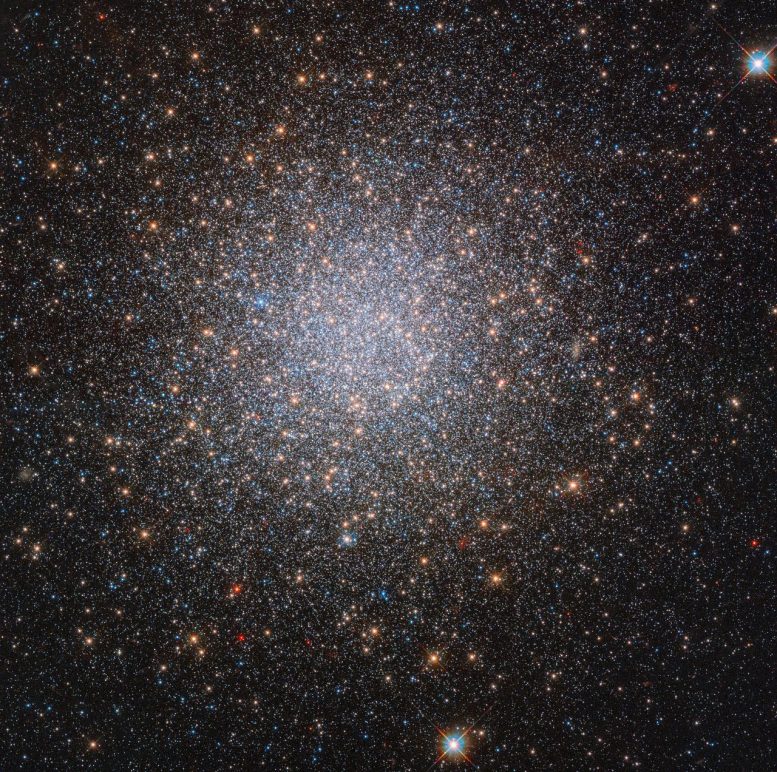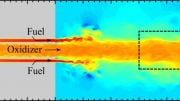
Researchers have discovered a faster rate of calcium production in stars by using a novel approach in which a proton is attached to a deuterium nucleus, facilitating potassium-hydrogen fusion. Credit: SciTechDaily.com
New experiments have demonstrated that stars convert potassium and hydrogen into calcium at a rate 13 times faster than previously thought.
This discovery, derived from the proton stripping 39K(3He,d)40Ca reaction, sheds light on the unusual chemical composition of NGC 2419 and enhances the accuracy of stellar models.
Groundbreaking Stellar Reaction Discovery
For the first time, researchers have constrained the rate at which stars convert potassium and hydrogen into calcium through experiments. These reactions are rare in laboratory settings. The researchers therefore used a novel approach: they hitched a proton onto a deuterium nucleus. This maneuver enabled a closer fusion of the proton with potassium, resulting in an amplified signal for measurement. Using these findings, the scientists determined the pace of calcium production in stars, revealing it to be 13 times faster than previously estimated.

Hubble Space Telescope image of the globular cluster NGC 2419, a collection of stars orbiting the Milky Way about 300,000 light years away from Earth. Credit: ESA/Hubble and NASA, S. Larsen et al.
Unraveling the Mysteries of NGC 2419
NGC 2419 is a globular cluster orbiting the Milky Way that is visible in the constellation Lynx. It contains potassium and magnesium in ratios not found in other, similar globular clusters. Scientists have so far been unable to find the source for this unexpected pattern. However, previous uncertainties in the potassium-hydrogen fusion reactions hindered the predictions of stellar models. This new study offers crucial experimental insights that enable refined stellar models to probe the peculiarities of NGC 2419.
Advanced Techniques in Nuclear Physics
In this study, researchers used the proton stripping 39K(3He,d)40Ca 39K+3He40Ca+2H reaction to populate proton-unbound states in 40Ca at the Triangle Universities Nuclear Laboratory. The high-resolution Enge split-pole spectrograph was used to measure outgoing deuterons coming from 40Ca excited states, and nuclear reaction models were used to extract their quantum mechanical nature.
Implications for Stellar Chemistry
The experiment allowed researchers to observe for the first time several states corresponding to proton resonances in the 39K + p system. The researchers then used the states’ energies and proton spectroscopic factors to calculate the rate of the 39K + p 40Ca reaction in stars. The rate was found to be a factor of 13 higher than previous estimates, with uncertainties 42 times smaller. These results mean that the Mg-K anti-correlation could be produced at lower temperatures than previously assumed.
Reference: “High Resolution Study of 40Ca to Constrain Potassium Nucleosynthesis in NGC 2419″ by W. Fox, R. Longland, C. Marshall and F. Portillo Chaves, 8 February 2024, Physical Review Letters.
DOI: 10.1103/PhysRevLett.132.062701
This work is supported by the Department of Energy (DOE) Office of Science, Office of Nuclear Physics. It was performed at the Triangle Universities Nuclear Laboratory, a DOE Center of Excellence.









Rapid Calcium Fusion Sheds Light on Stellar Phenomena—-WHY?
Please ask researchers to think deeply:
1. What are the similarities and differences between low dimensional matter and high-dimensional matter?
2. What are the similarities and differences between 2D and 3D?
3. Why do so-called academic journals not understand dirtiness and ugliness?
4. Where is the moral bottom line of academic journals?
5. What is science?
and so on.
Physical Review Letters (PRL) is the dirtiest and ugliest publication in the history of science. It is almost unaware of how much damage it has caused to today’s physical science and how much taxpayer money it has wasted. Contemporary physics should not always live in a fairy tale world.
Scientific research guided by correct theories can help humanity avoid detours, failures, and pomposity. Please witness the exemplary collaboration between theoretical physicists and experimentalists (https://scitechdaily.com/microscope-spacecrafts-most-precise-test-of-key-component-of-the-theory-of-general-relativity/#comment-854286). Is this the fairy tale world of contemporary physics?
More information for the fusion physics sciences.